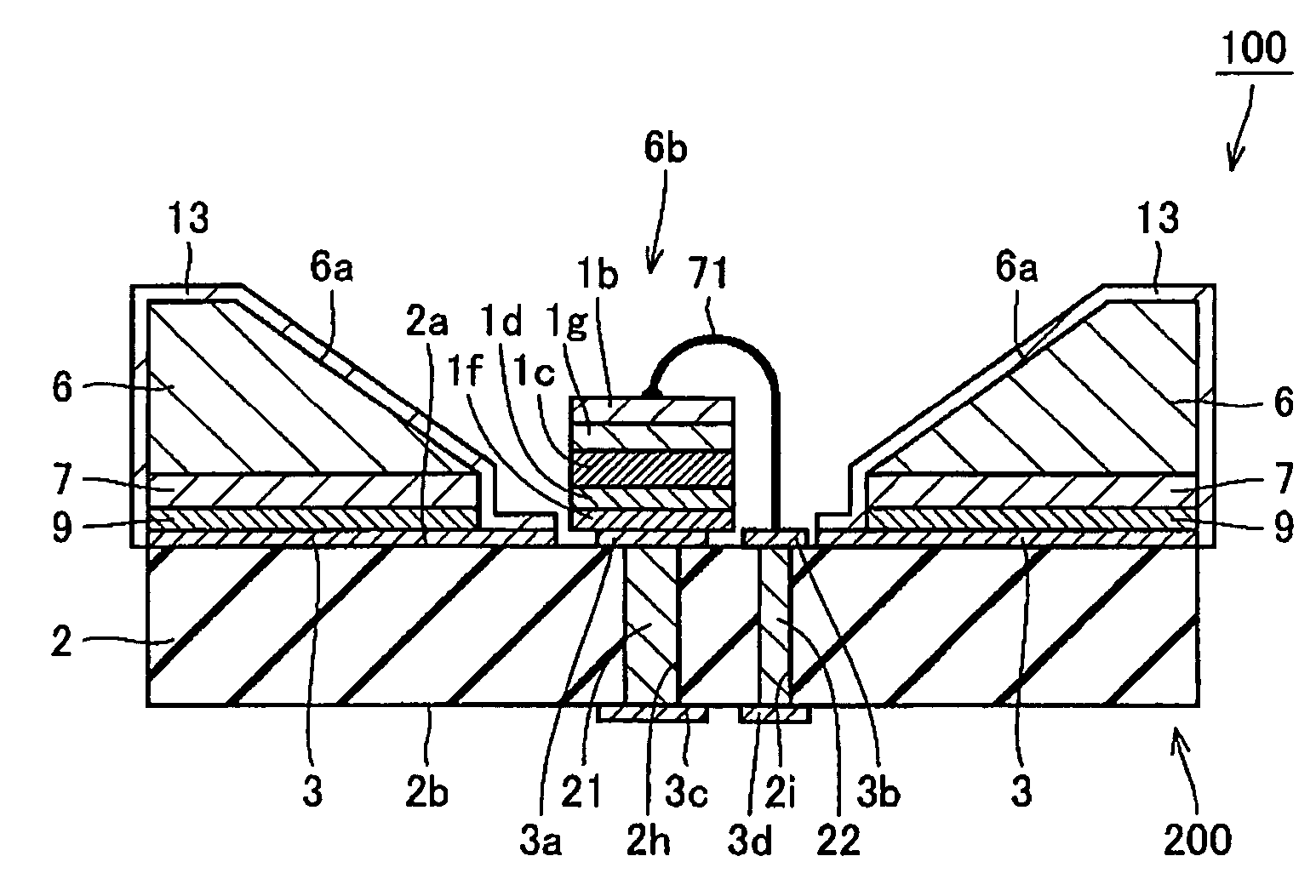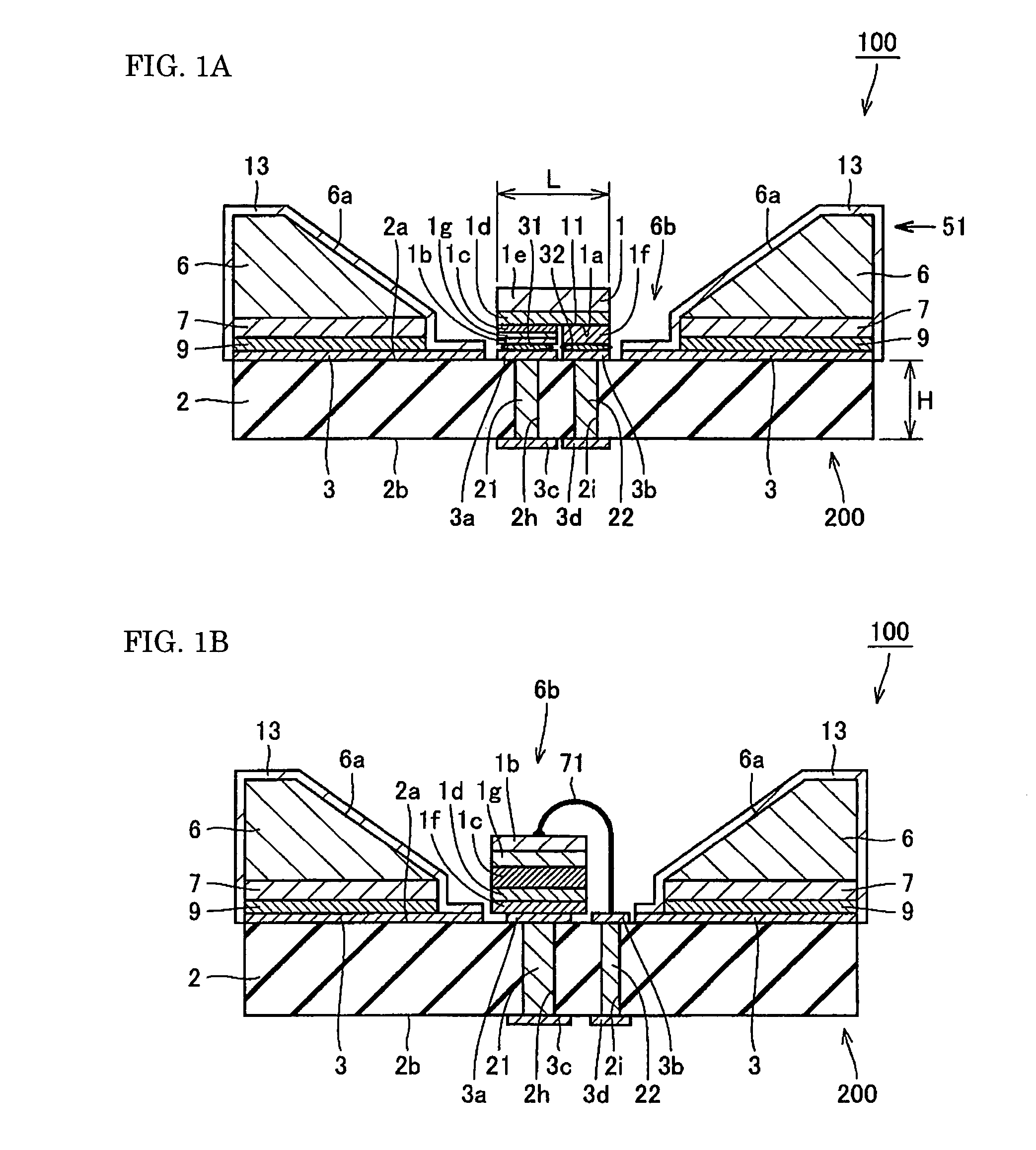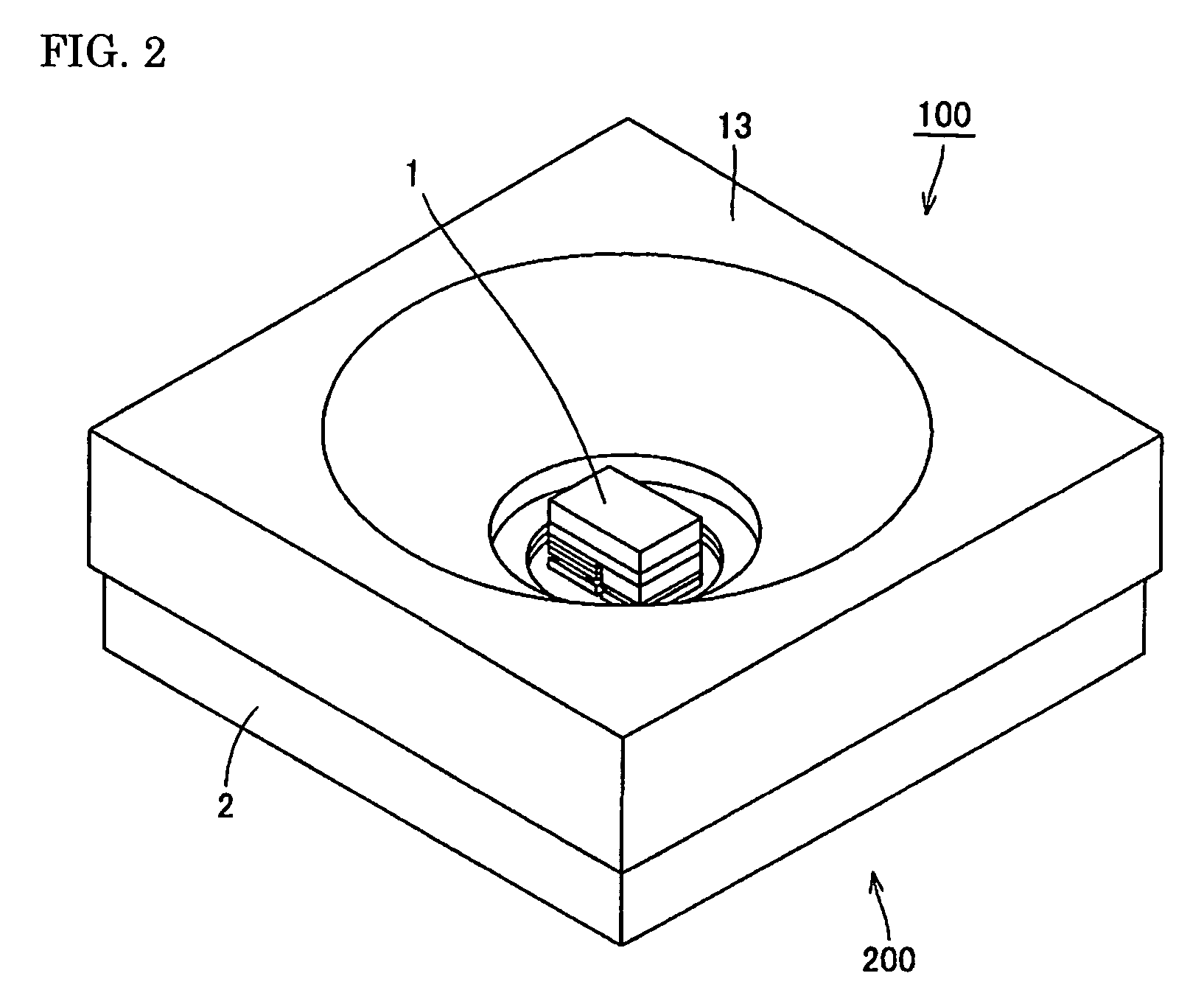Light emitting element mounting member, and semiconductor device using the same
a technology of light emitting elements and mounting parts, which is applied in the direction of semiconductor lasers, lighting and heating apparatus, discharge tube luminescnet screens, etc., can solve the problems of increased temperature, increased raw material cost, and increased heat dissipation, and achieves efficient dissipation and superior cooling properties.
- Summary
- Abstract
- Description
- Claims
- Application Information
AI Technical Summary
Benefits of technology
Problems solved by technology
Method used
Image
Examples
first embodiment
[0031]FIG. 1 is a cross-section drawing of a light-emitting element mounting member according to a first embodiment of the present invention and a semiconductor device using the same. FIG. 1A is a cross-section drawing of a semiconductor device according to one aspect. FIG. 1B is a cross-section drawing of a semiconductor device according to another aspect. FIG. 2 is a perspective drawing of the semiconductor device shown in FIG. 1A. FIG. 3 is a perspective drawing of the semiconductor light-emitting element shown in FIG. 1A. As shown in FIG. 1A, FIG. 2, and FIG. 3, a semiconductor device 100 according to the first embodiment of the present invention includes: a light-emitting element mounting member 200; and a semiconductor light-emitting element 1 mounted on an element mounting surface 2a. The semiconductor light-emitting element 1 includes a main surface 1a facing the element mounting surface 2a. In this example, the main surface 1a is formed as a rectangle including a longer fir...
second embodiment
[0069]FIG. 13 is a cross-section drawing of a light-emitting element mounting member and a semiconductor device that uses the same according to a second embodiment of the present invention. As shown in FIG. 13, in the light-emitting element mounting member 200 according to the second embodiment of the present invention, metal films 4, 4a, 4b are formed on the element mounting surface 2a, and the metal films 4, 4a, 4b are formed from Ag or Al. In this case, as shown in FIG. 13, it is possible to have the metal layer 13 formed only on the reflective member 6.
[0070]In this case, the same advantages are provided as those of the light-emitting element mounting member 200 and the semiconductor device 100 according to the first embodiment.
working example
[0071]A detailed study into the characteristics of the bonding layer 9 bonding the substrate 2 and the reflective member 6 was performed using a working example. Referring to FIG. 1, the reflective member 6 was attached to the element mounting surface 2a of the substrate 2 formed from aluminum nitride, interposed by the bonding layer 9. The reflective member 6 is an Ni—Co—Fe alloy with an Ni proportion of 29% by mass, a Co proportion of 18% by mass, and an Fe proportion of 53% by mass. Also, the dimensions of the reflective member 6 were set to 5 mm×5 mm×1 mm (height×width×thickness).
[0072]For the bonding layer 9, the sample 1 through the sample 8 from Table 1 were used.
[0073]
TABLE 1ElectrodemetallizedHeatHeatpatternSampleMaterial for theBondingresistanceresistancedegradationNo.bonding layer 9temperature12Strength(Au film 3)Notes1SolderAu—Ge 12%360° C.◯◯◯◯⊚2Ag—Cu 28%780° C.◯◯◯XDiscoloration in Au immediatelyafter bonding; Film thicknessreduced3Au—Sn 20%280° C.XX◯◯Re-melting of bondi...
PUM
 Login to View More
Login to View More Abstract
Description
Claims
Application Information
 Login to View More
Login to View More - R&D
- Intellectual Property
- Life Sciences
- Materials
- Tech Scout
- Unparalleled Data Quality
- Higher Quality Content
- 60% Fewer Hallucinations
Browse by: Latest US Patents, China's latest patents, Technical Efficacy Thesaurus, Application Domain, Technology Topic, Popular Technical Reports.
© 2025 PatSnap. All rights reserved.Legal|Privacy policy|Modern Slavery Act Transparency Statement|Sitemap|About US| Contact US: help@patsnap.com



